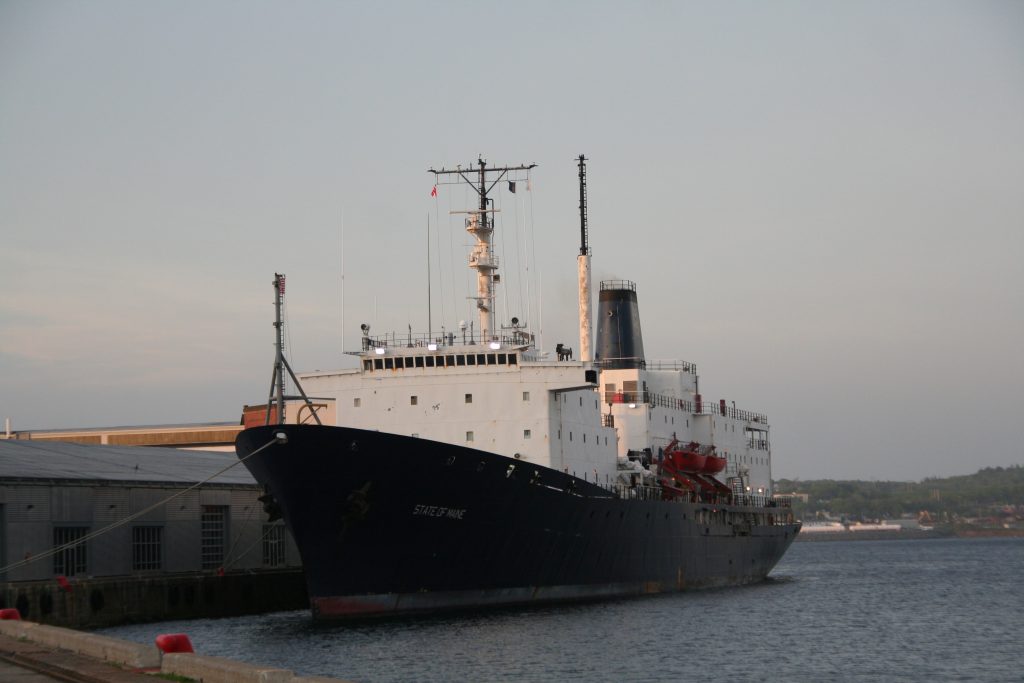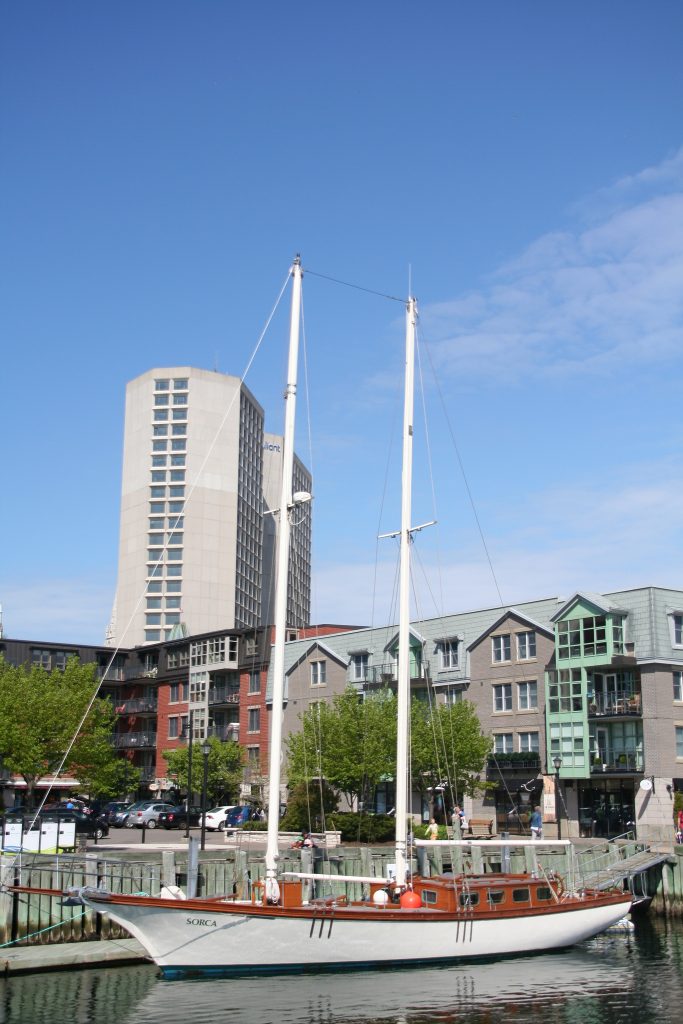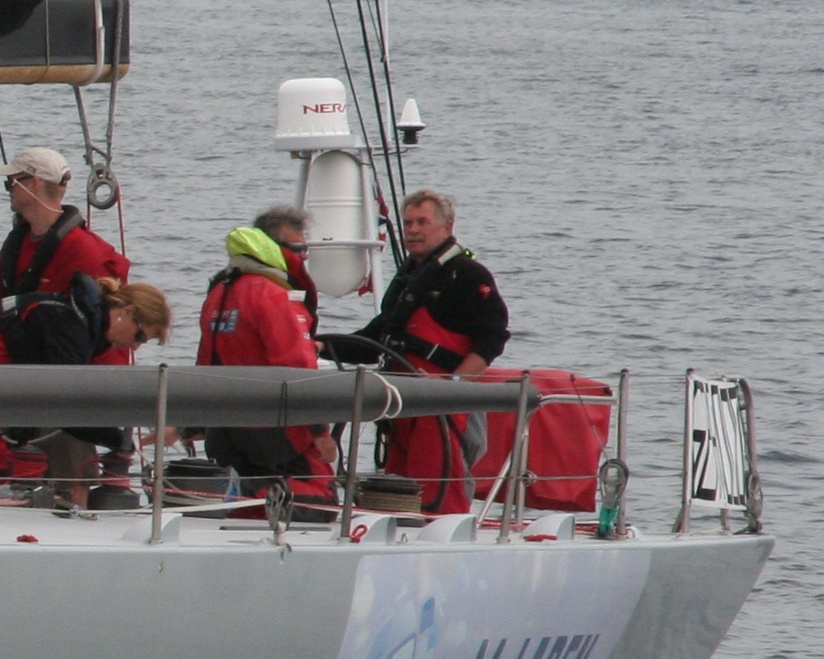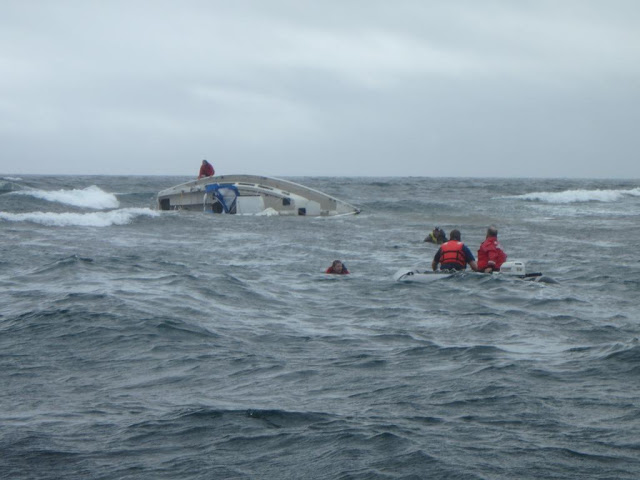The Dutch two masted topsail schooner Wylde Swan will arrive at Tall Ships Quay (in front of the Nova Scotia Power Headquarters) tomorrow morning. She is scheduled to pick up her pilot at 0800. She sails on the 17th.
Category Archives: sailing
2x Training Ships at the Ocean Terminals
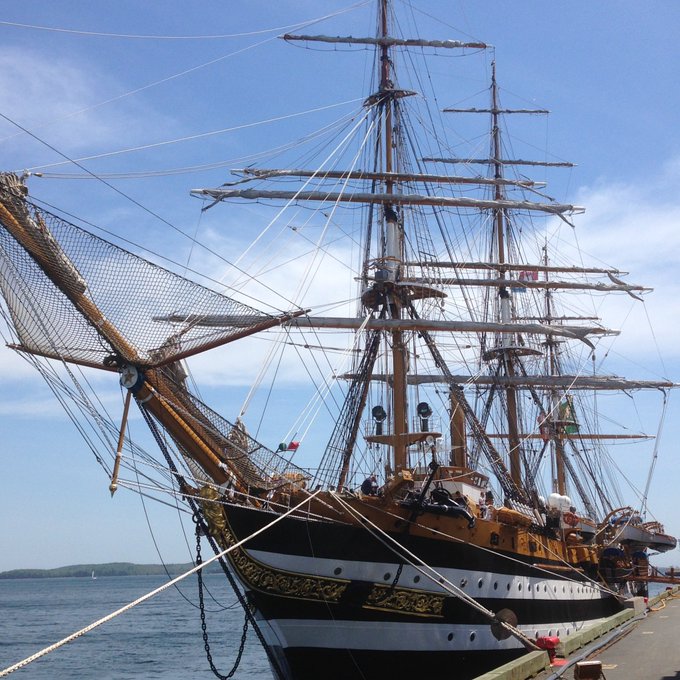
Saturday brought the Arrival of 2 training ships. The First, The Italian Navy sail training vessel Amerigo Vespucci. Named after an Italian explorer the vessel is a full rigged three-masted steel hull 270.34 ft long, width of 15.5 m 51 ft. She has a draught of about seven metres (23 ft). She was built in 1930/31 and the design was inspired by the style of large late 18th century 74-cannon ships of the line. She is home-ported in La Spezia. I believe she was last in Halifax in 2000.
She will be open for tours at Pier 20 today 1600 – 1830 and 2030 to 2200, and tomorrow 1030-1200 and 1530-1700
The Second training Vessel is the TS State of Maine, which belongs to the Maine Maritime Academy. Built in 1990, she is the ex USNS Tanner (T-AGS-40) and was laid up following an engine room fire in 1993. In 1996 she began conversion to the training ship, and went on her first voyage in 1997. She is tied up at pier 23, and is not open to the public.
Sailing Race in Trouble
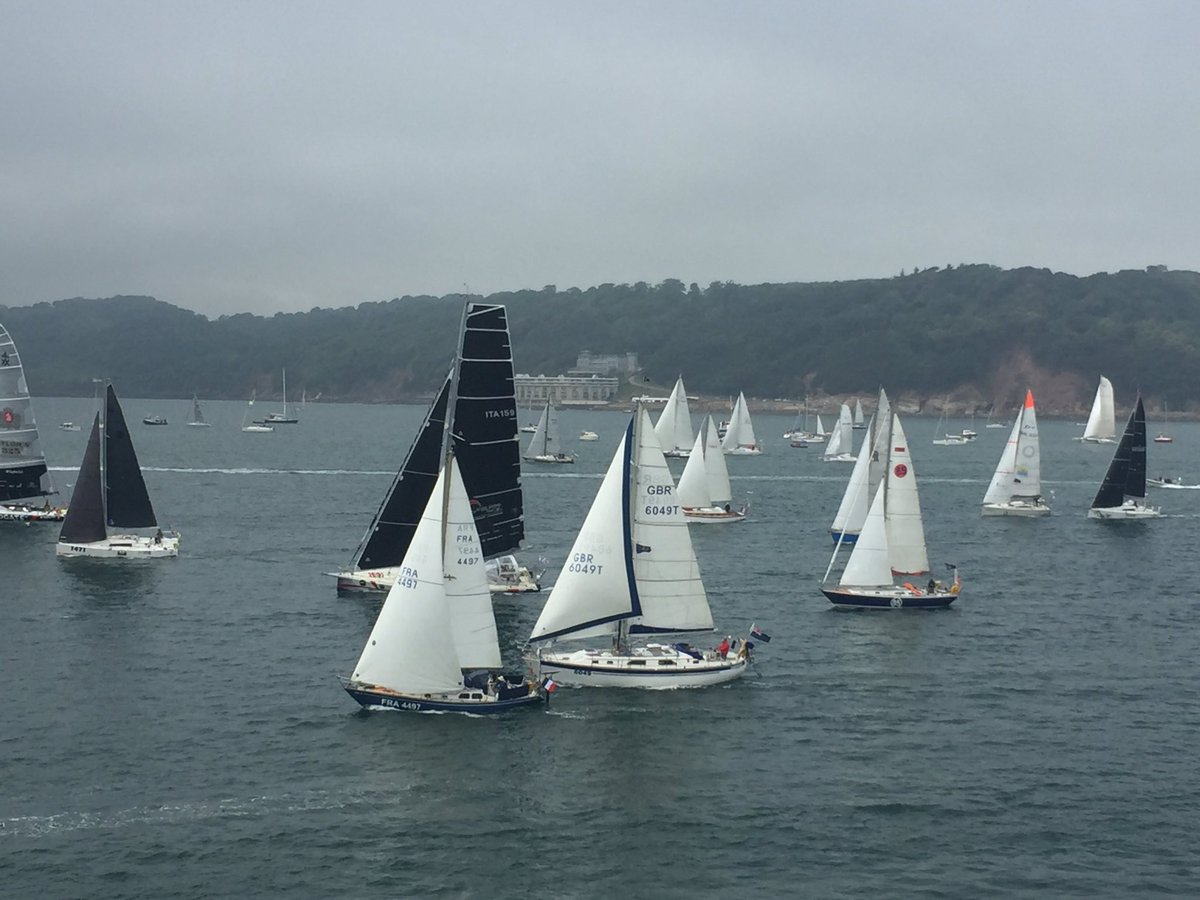
The Halifax Joint Rescue Coordination Center is reporting Multiple sailing vessels are in trouble in the mid-Atlantic that were participating in trans-Atlantic races. The Royal Western Yacht Club’s original single-handed and two-handed transatlantic races (OSTAR2017 and TWOSTAR2017) are from Plymouth, UK to Newport, Rhode Island.
JRCC reports At least one vessel is demasted, with others having rigging and or hull damage. Conditions in the area are difficult with 50-70kt winds and 10-15 meter seas (Sea State 8 / 9)
CC-130 Hercules and a CP-140 Aurora aircraft from 14 Wing Greenwood, as well as HMCS CHARLOTTETOWN, CCGS Pearkes, CCGS Cygnus and 2 civilian tankers are proceeding to the area. JRCC is coordinating additional assistance from other Atlantic marine rescue centers, including a P3 Orion aircraft from Portugal.
Photos are from the May29th Race Start via twitter.
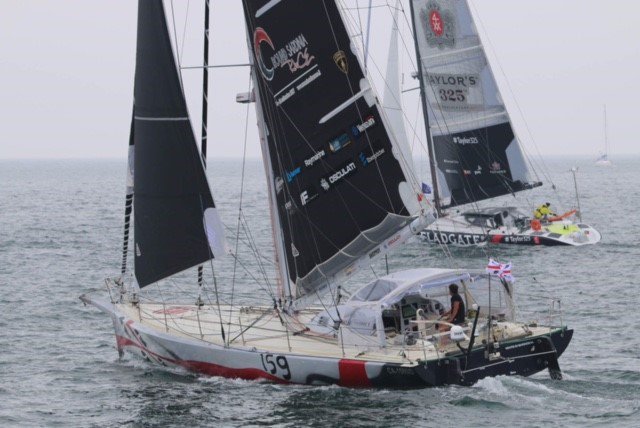
Updates to follow as known.
UPDATE:
Locations of the Vessels from OStar telemetry. You can see live positions at http://yb.tl/rwyc_transat2017
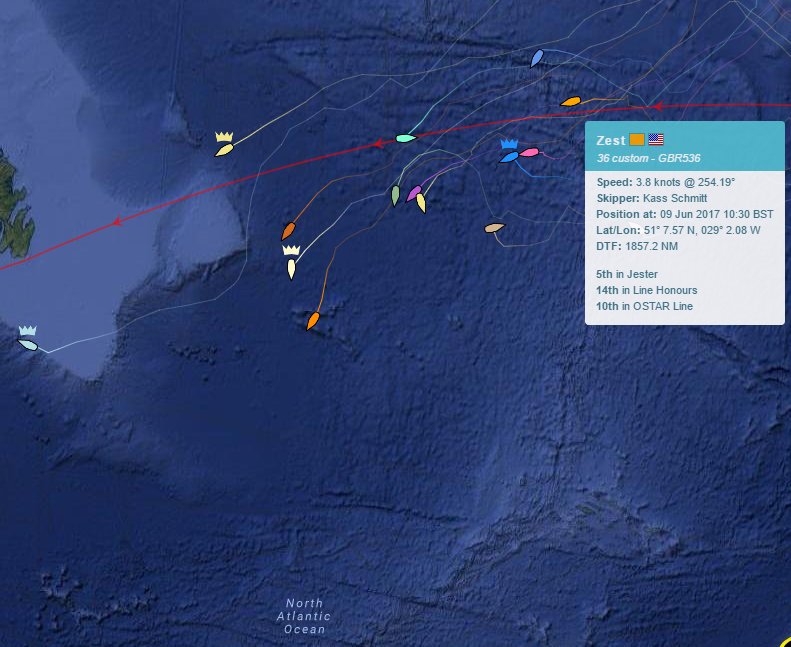
Update 15:47: 3 vessels triggered emergency beacons just after midnight. 2 are single handed, and the third has a crew of 2. They were 1600nm east of Newfoundland around noon today.
UPDATE 10:48
JRCC is reporting one vessel has motored out of the storm area and is no longer in danger. 2 crew have been rescued by a merchant ship, and the Queen Mary II is on its way to the third.
Additionally a 4th vessel is taking on water 250nm off Newfoundland
UPDATE 06/12 0900: 5 rescues were completed over the weekend.
As 0f 1700 June 10th, the original 3 distress calls were resolved. ALP Forward Rescued 2 Sailors from 1 vessel, The Queen Mary II rescued one from a second vessel and the single sailor on the third vessel was able to motor out of the storm area and was no longer in distress. Merchant Ships MSC Anzou, Labrador and Federal Kushiro provided additional assistance.
The sailor on the 4th Vessel, off Newfoundland was rescued by Thor Magni, with a PAL aircraft overhead.
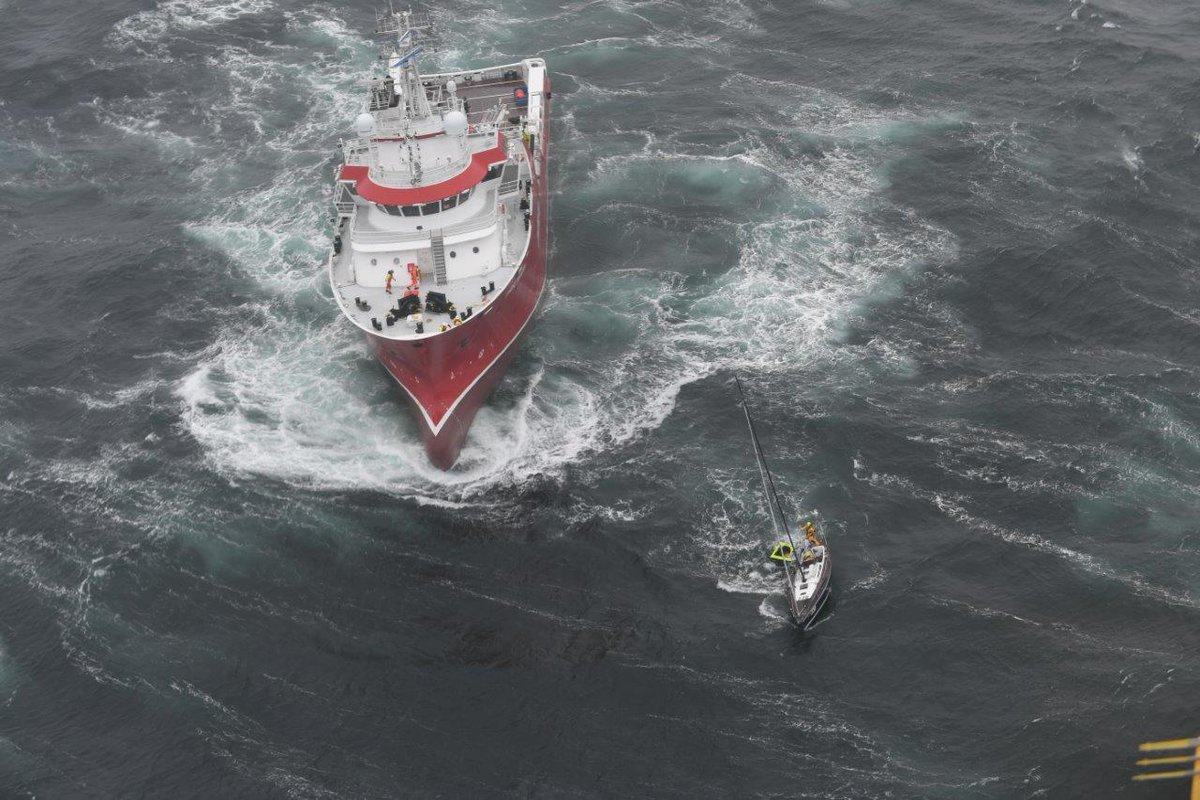
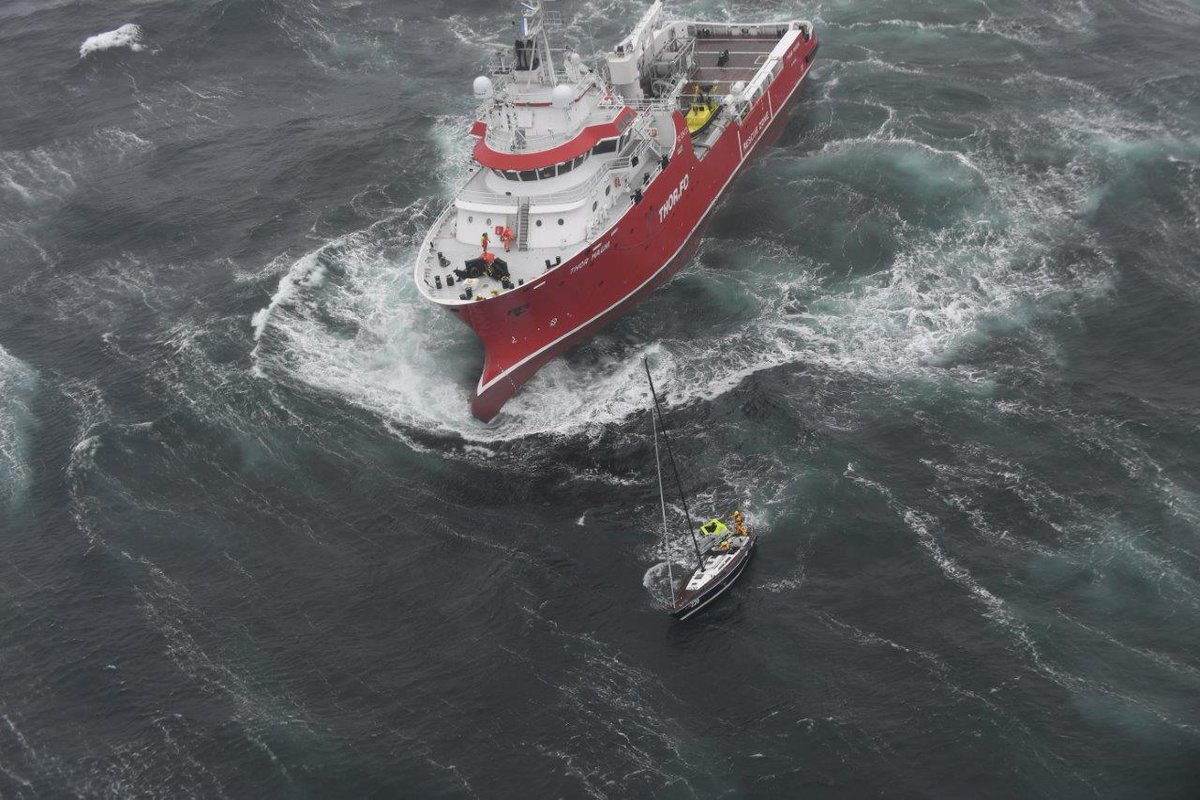
Yesterday a 406 EPIRB was detected 350nm South East of Newfoundland. The sailor reported keel damage and that he was taking on water. After refueling at the White Rose Platform, a Cormorant helicopter rescued the sailor and flew him to St john’s
Sailing Vessel Sorca runs into trouble, crew rescued
The Sailing vessel Sorca, has been lost, while on her way to Bermuda. The Sorca was a regular caller in Halifax, and requested assistance after she began to take on water 155nm SE of Halifax. The Joint Rescue Coordination center dispatched a Hercules and a cormorant helicopter. The 4 Sailors aboard the Sorca were rescued by the Onego Capri. the Cormorant then hoisted the crew and brought them to Halifax airport.
Sorca was built in 1978 in Lunenburg
Tall Ships 2017 Attendees
The Tall Ships will be in Halifax July 29-Aug 1st this year. A partial list of Vessels Attending the Tall ships event in Halifax is Below. These vessels will depart Halifax for Lahave France. Additional vessels will take part in an outport program throughout August. Of Note – The Esquimalt based RCN Sail Training Vessel HMCS Oriole is due to participate. Notably absent is the Draken Harald Hårfagre, the Viking longboat currently wintering in Mystic Seaport, though she may participate in the other program.
Alexander von Humboldt II
Atyla
Blue Clipper
Bluenose II
Esmeralda
Geronimo
Gulden Leeuw
Jolie Brise
Mist of Avalon
Nadezhda
Oostershelde
HMCS Oriole
Peter von Danzig
Regina Germania
Rona II
Sorca
Spaniel
Spirit of South Carolina
St Lawrence II
Union
Vahine
Wylde Swan
Update on Schwalb
Shes a wreck Now.
the vessel was blown 1600 miles off course Arrested by WWDC for unpaid Dockage and broke free in a storm in February 2015 and went aground. based on the photos, its likely she was stripped just after grounding.
The videos bellow were shot Dec 21/2016. Warning, there is swearing in them
Olympic Sailing.
The Olympics are upon us. This post will attempt to Explain the basic workings of the Olympic Sailing Events, and give details of the classes (and link to Canadian competitors.
There are several Classes of vessels, which compete in Fleet events. Each vessel class has different characteristics. In Fleet competition, all 41 competitors complete 10 races with a mass start. Points are awarded based on your place in each race, and the lowest combined total points wins (you can drop one score) the 10 best boats then go on to do it again for the medals, though this time the points are doubled.
The Venue consist of 7 course locations. the idea is each fleet will race each location at least once. The Medal races are planned for Pao de Acucar, right off the beach. The docking area is highlighted in yellow.
In previous Olympics, Star and 6m Keelboats competed in Match races. Match races are One on One round robin style, with the best boats moving on to the medal round. keelboats were removed from Olympic competition for Rio by the IOC.
Events run Aug 8-18, and start at 1pm (eastern?) I will update this post with TV/online coverage as it becomes known. Live tracking is available at http://www.sailing.org/olympics/rio2016/multimedia/live_tracking.php#.V6ij2-Nf3RZ
Laser

The Laser is a dinghy designed by Canadian Bruce Kirby in 1969. It become the Olympic Standard Dinghy in 1996. As a one-design class of sailboat, all Lasers are built to the same specifications. The hull is 4.19 metres (13 ft 10.5 in) long, The hull weight is 130 lb, which makes the boat light enough to lift onto a car-top rack. The Laser is Cat-rigged; they have only a main sail. The Laser Standard sail has a sail area of 7.06 m² (76 ft²) and, especially in higher winds (15 knots and over), is most competitive when sailed by a very fit, agile, and muscular person weighing no less than 80 kg (175 lb).
Lee ParkHill
http://twitter.com/@LeeParkhill
Laser Radial
The Laser Radial has been the Women’s Olympic Dinghy since 2008. The Hull is identical to the laser, but the radial uses a smaller sail(5.7), shorter lower mast section and has a different cut of sail to that of the standard. It is optimally used by someone in the 120-160lbs range.
Brenda Bowskill
http://twitter.com/brendabowskill
Finn:
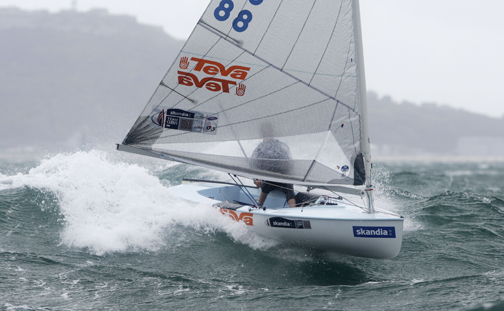
The Finn dinghy is the men’s Heavyweight Dinghy at the Olympic games. Like the laser, it is a single-handed, cat-rigged boat. It was designed by Swedish canoe designer, Rickard Sarby, in 1949 for the 1952 Summer Olympics in Helsinki. Since the 1952 debut of the boat, the design has been in every summer Olympics, making it one of the most prolific Olympic sailboats as it is the longest serving dinghy in the Olympic Regatta. The fin Weighs 230lbs, is 14’3″ long, and carries 114sqft of Sail.
Tom Ramshaw
http://instagram.com/tomramshaw
http://twitter.com/TomRamshaw
International 470
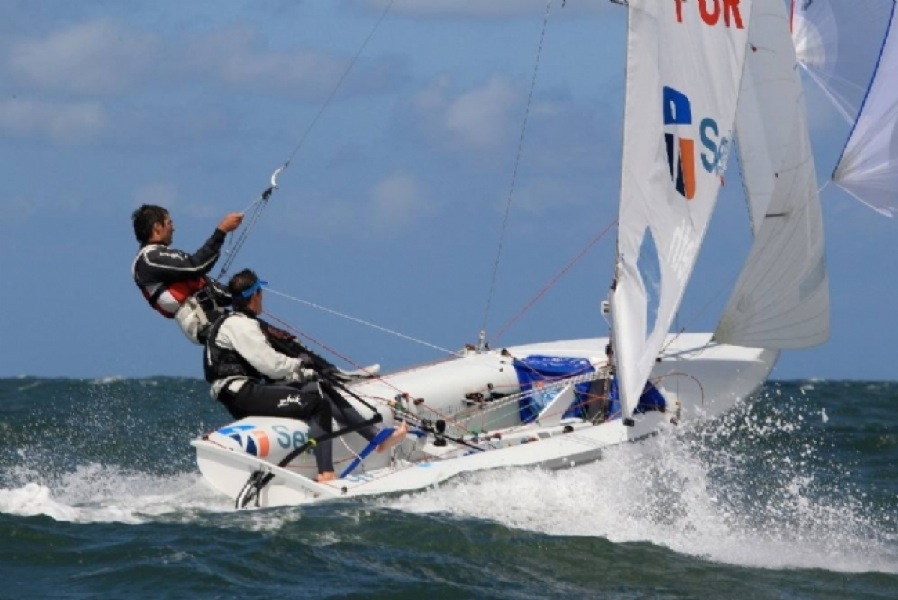
The 470 was designed in 1963 by the Frenchman André Cornu as a modern fibreglass planing dinghy to appeal to sailors of different sizes and ages. In 1969, the class was given international status and it has been an Olympic class since 1976. In 1988, the first Olympic women’s sailing event used the 470. The 470 (Four-Seventy) is a double-handed monohull planing dinghy with a centreboard, Bermuda rig, and is equipped with a spinnaker and trapeze.
Graeme & Jacob Saunders
http://twitter.com/saunderssailing
http://instagram.com/teamsaunderssailing
Nacra 17
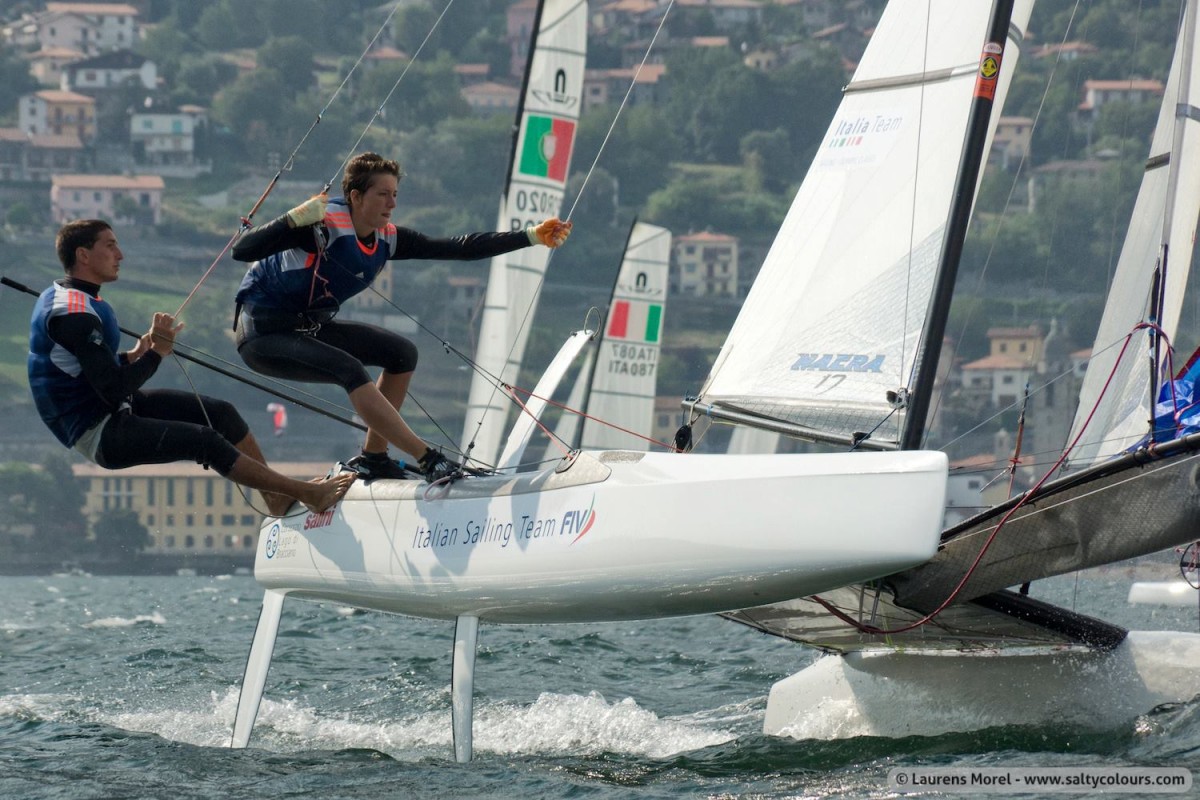
The Nacra 17 is a Mult-hull. It was first designed in 2011 and went in production in 2012. Its 17′ long, weighs 311 lbs, and has 200sqft of sail between the main and Jib, and also carries a spinnaker. Rio will be the olympic Debut, and the boat has also been selected for use in 2020. Uniquely, The Boat is crewed by a mixed teams.
Luke RamsayNicola Girke
http://www.nikandluke.com/
http://twitter.com/@NikGoing4Gold
http://instagram.com/nikgoing4gold
http://instagram.com/dailysailor
http://twitter.com/sailluke
49er
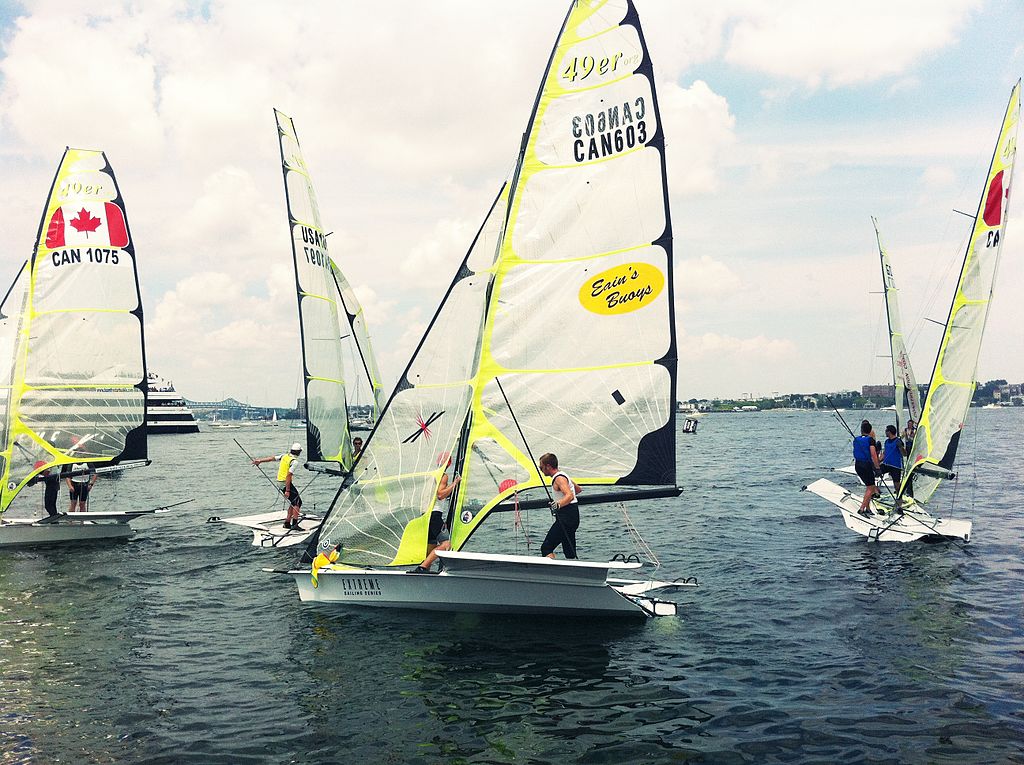
49er FX is a two-handed skiff-type high-performance sailing dinghy. The 49er was designed by Julian Bethwaite and has been in every olympics since its debut in the Sydney Olympics of 2000. The FX uses a smaller rig then the standard 49er, and is the Womans Olympic Class Skiff. The 49er’s name comes from its hull length of 4.99 metres. It weighs 207 lbs.
Erin Rafuse/Dannie Boyd
http://www.teamrafuseboyd.com/
https://twitter.com/teamrafuseboyd/
http://twitter.com/@erin_rafuse
http://instagram.com/dannieboyd
http://twitter.com/@dannie_boyd
Derick Hatfield dead at 63.
News came out overnight that Derick Hatfield had passed away suddenly. the details surrounding his passing were not released.
Hatfield had 3 times raced Solo around the world, becoming the 126th person to do so solo after his first attempt in 2002 (another Nova Scotian, Joshua Slocum was first, in his vessel Spray). He finished third in the 2002 Around Alone race. he attempted the 2008 Vendee Globe, but was demasted, and had to drop out, and on his third attempt, finished third in the Velux 5 Oceans race in 2010.
The only Photos I have are of his Vessel Spirit of Adventure, from the start of the 2014 Route Halifax St. Pierre. the boat is a Volvo 60, originally Amver Sport1 from the 2001 Volvo Oceans Race.
Late Arrival – Norwegian Sailboat Flekkeroy
Follow Up On Sailboat Accident Yesterday.
DFO released the above picture today of yesterdays incident. Reports were of a vessel in trouble, off halifax, and CCGS Sambro Was Responding. The Sambro was noted to be in a position between Conrad’s and Lawrencetown beaches, where there appears to be a shoal.
CHS Chart #4237 (Halifax Harbour and Approaches) Refers to the point of land as Fox Point, and the rocks are actually labeled Egg Island.
The Sambro collected the 3 people, and took them to the Government Wharf in Eastern passage where they were tended to by paramedics.

